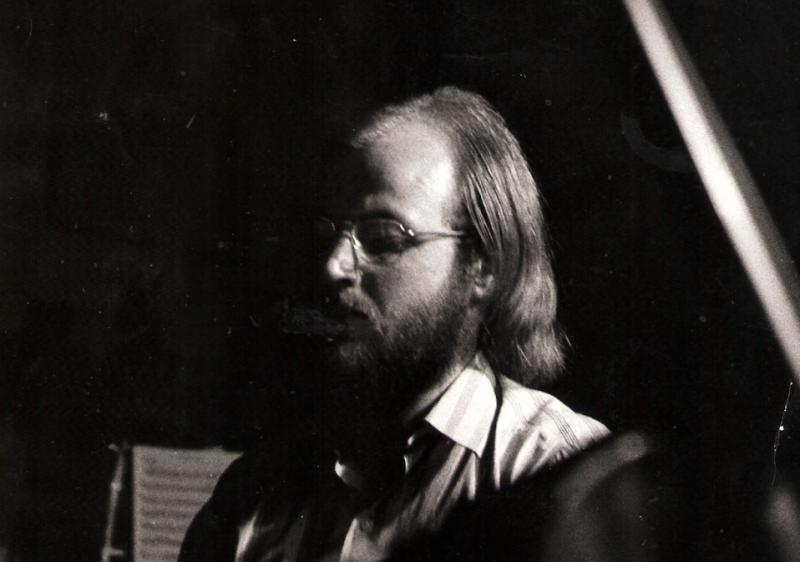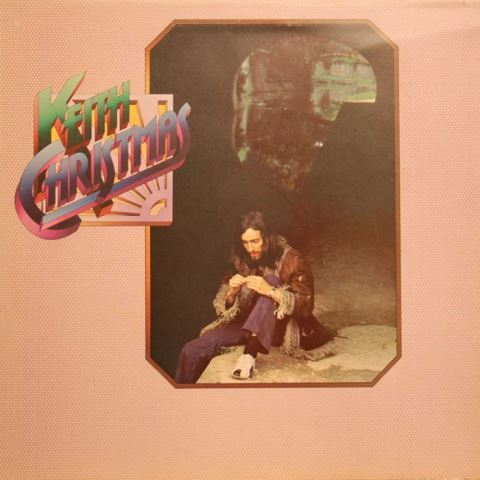Reissue CDs Weekly: Robert Kirby | reviews, news & interviews
Reissue CDs Weekly: Robert Kirby
Reissue CDs Weekly: Robert Kirby
Conscientious collection dedicated to the musical arranger usually associated with Nick Drake

The similarity is intentional. The cover design of When the Day is Done – The Orchestrations of Robert Kirby nods explicitly to that of Nick Drake’s debut album Five Leaves Left. That wasn’t just the first record by the singer-songwriter, it was also first time most people heard Kirby’s string arrangements. He and Drake had been friends at Cambridge University.
For Kirby, this was the beginning of a career which flourished until the late 1980s, when his last credits included arrangements for Any Trouble, Elvis Costello and Nick Lowe after which he began a career in market research. He did, though, return to music in the late 1990s, initially with the twilight-toned Irish band Catchers. He died in 2009.
 When the Day is Done tracks Kirby from 1970 to 1978 through 20 frequently extraordinary tracks. Drake is here with the all-instrumental "Introduction", which opened his second album Bryter Later. Appropriately, it is sequenced as Track One. Also heard are Steve Ashley, Vashti Bunyan, Shirley Collins, Sandy Denny, Spriguns and Richard & Linda Thompson. As well as working with British folk-rock’s prime movers, Kirby contributed to records by the compilation’s less categorisable Audience, John Cale, Dana Gillespie, Andy Roberts and Gary Shearston.
When the Day is Done tracks Kirby from 1970 to 1978 through 20 frequently extraordinary tracks. Drake is here with the all-instrumental "Introduction", which opened his second album Bryter Later. Appropriately, it is sequenced as Track One. Also heard are Steve Ashley, Vashti Bunyan, Shirley Collins, Sandy Denny, Spriguns and Richard & Linda Thompson. As well as working with British folk-rock’s prime movers, Kirby contributed to records by the compilation’s less categorisable Audience, John Cale, Dana Gillespie, Andy Roberts and Gary Shearston.
Assembled by Saint Etienne’s Bob Stanley with a keen ear towards what Kirby brought to each track, this overdue first-ever dedicated collection captures the essence of a very particular musical approach. Although Kirby produced Lynsey de Paul’s candyfloss-pop 1972 hit “Sugar Me” and played live with The Strawbs, his arrangements were, in Stanley’s words, “English and melancholic, closer to Vaughan Williams than Phil Spector [and] totemic of a post-‘60s, post-swinging England that wore a greatcoat and kicked up leaves…relaxed, familiar and entirely autumnal.” The chorister and rock ‘n’ roll fan realised strings could enhance pop when he heard The Beatles’ “She’s Leaving Home”. Strings were Kirby's main order of the day but his scores also incorporated the harp, Mellotron and woodwind.
With the arc of a proper album ensuring it has to be listened to overall, When the Day is Done nonetheless features tracks which, while being top-notch examples of British music from the Seventies, are stand-outs. John Cale is a viola player, producer and composer, so his choice of Kirby for the 1975 Helen of Troy album’s “I Keep a Close Watch” confirms Kirby’s status. Whatever Cale has said subsequently to disown the album, the performance is moody, with a dark melody and forceful delivery which perfectly balance against full but non-intrusive strings. Kirby had brought an added power.
 Then there is Andy Roberts' 1971 beautiful album track “I’ve Seen the Movie” which catalogues the end of a relationship. Quintessentially British in a Colin Blunstone way, this could be a mawkish drama-in-song but Kirby’s sinuous instrumentation weaves in and out of Roberts’ broken voice to intensify the poignancy. The same trademark swells and swirls colour Keith Christmas’s “Forest and the Shore” (1971), a fantastic seven-minute epic and stylistic cousin of Serge Gainsbourg’s Histoire de Melody Nelson, issued the same year.
Then there is Andy Roberts' 1971 beautiful album track “I’ve Seen the Movie” which catalogues the end of a relationship. Quintessentially British in a Colin Blunstone way, this could be a mawkish drama-in-song but Kirby’s sinuous instrumentation weaves in and out of Roberts’ broken voice to intensify the poignancy. The same trademark swells and swirls colour Keith Christmas’s “Forest and the Shore” (1971), a fantastic seven-minute epic and stylistic cousin of Serge Gainsbourg’s Histoire de Melody Nelson, issued the same year.
In 1978, Illusion were a band out of time but their “Madonna Blue” is one of the most affecting total works of sound on When the Day is Done. The band hinged on former Yardbird Jim McCarty and were an outgrowth of the baroque folk-rock group Renaissance, which he had formed with fellow Yardbird Keith Relf. On 31 August 1977, they were headlining London’s Marquee. The next night, the stage was occupied by art-punks Gloria Mundi. After that, on 2 September, it was punks-as-such The Adverts. Despite the square-peg background, time has been kind to Illusion. Their “Madonna Blue” is a prog-tinged aural swoon in which the strings are integral to the overall mood and melody. At its core, the performance suggests a home-grown, pastoral British counterpart to the 1975 model of Fleetwood Mac.
When the Day is Done – The Orchestrations of Robert Kirby is essential. It explores British popular music from a new perspective. Which is rare. It sets Kirby in context and reveals his importance. No longer is he a figure in the shadows. Most importantly, it is a great listen.
- Next week: Albums two and three from Cocteau Twins – 1983's Head Over Heels and 1984's Treasure
- Read more reissue reviews on theartsdesk
Explore topics
Share this article
The future of Arts Journalism
You can stop theartsdesk.com closing!
We urgently need financing to survive. Our fundraising drive has thus far raised £49,000 but we need to reach £100,000 or we will be forced to close. Please contribute here: https://gofund.me/c3f6033d
And if you can forward this information to anyone who might assist, we’d be grateful.

Subscribe to theartsdesk.com
Thank you for continuing to read our work on theartsdesk.com. For unlimited access to every article in its entirety, including our archive of more than 15,000 pieces, we're asking for £5 per month or £40 per year. We feel it's a very good deal, and hope you do too.
To take a subscription now simply click here.
And if you're looking for that extra gift for a friend or family member, why not treat them to a theartsdesk.com gift subscription?
more New music
 Brìghde Chaimbeul, Round Chapel review - enchantment in East London
Inscrutable purveyor of experimental Celtic music summons creepiness and intensity
Brìghde Chaimbeul, Round Chapel review - enchantment in East London
Inscrutable purveyor of experimental Celtic music summons creepiness and intensity
 First Person: Musician ALA.NI on how thoughts of empire and reparation influenced a song
She usually sings about affairs of the heart - 'TIEF' is different, explains the star
First Person: Musician ALA.NI on how thoughts of empire and reparation influenced a song
She usually sings about affairs of the heart - 'TIEF' is different, explains the star
 Album: The Divine Comedy - Rainy Sunday Afternoon
Neil Hannon takes stock, and the result will certainly keep his existing crowd happy
Album: The Divine Comedy - Rainy Sunday Afternoon
Neil Hannon takes stock, and the result will certainly keep his existing crowd happy
 Music Reissues Weekly: Robyn - Robyn 20th-Anniversary Edition
Landmark Swedish pop album hits shops one more time
Music Reissues Weekly: Robyn - Robyn 20th-Anniversary Edition
Landmark Swedish pop album hits shops one more time
 Album: Twenty One Pilots - Breach
Ohio mainstream superstar duo wrap up their 10 year narrative
Album: Twenty One Pilots - Breach
Ohio mainstream superstar duo wrap up their 10 year narrative
 Album: Ed Sheeran - Play
A mound of ear displeasure to add to the global superstar's already gigantic stockpile
Album: Ed Sheeran - Play
A mound of ear displeasure to add to the global superstar's already gigantic stockpile
 Album: Motion City Soundtrack - The Same Old Wasted Wonderful World
A solid return for the emo veterans
Album: Motion City Soundtrack - The Same Old Wasted Wonderful World
A solid return for the emo veterans
 Album: Baxter Dury - Allbarone
The don diversifies into disco
Album: Baxter Dury - Allbarone
The don diversifies into disco
 Album: Yasmine Hamdan - I Remember I Forget بنسى وبتذكر
Paris-based Lebanese electronica stylist reacts to current-day world affairs
Album: Yasmine Hamdan - I Remember I Forget بنسى وبتذكر
Paris-based Lebanese electronica stylist reacts to current-day world affairs
 theartsdesk on Vinyl 92: Marianne Faithful, Crayola Lectern, UK Subs, Black Lips, Stax, Dennis Bovell and more
The biggest, best record reviews in the known universe
theartsdesk on Vinyl 92: Marianne Faithful, Crayola Lectern, UK Subs, Black Lips, Stax, Dennis Bovell and more
The biggest, best record reviews in the known universe
 Blondshell, Queen Margaret Union, Glasgow review - woozy rock with an air of nonchalance
The singer's set dripped with cool, if not always individuality
Blondshell, Queen Margaret Union, Glasgow review - woozy rock with an air of nonchalance
The singer's set dripped with cool, if not always individuality

Add comment